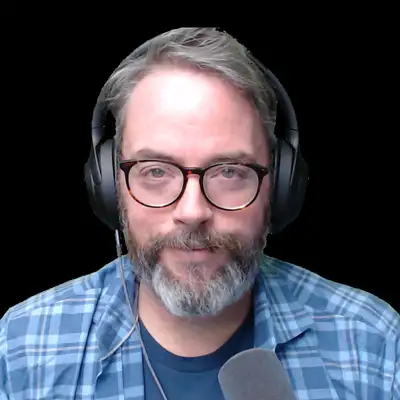The Pavement and the Void
Download MP3In the book of five rings, the last book of emptiness or the book of void is, in my opinion,
the coolest thing.
It's the shortest of the books, ironically, in English it's only maybe a page or two.
But what it encapsulates in the context of the entirety of the book of five rings is effectively
the place where your mind should settle in the context of execution of the art of swordsmanship.
And in Masonic Parliaths, probably the most appropriate symbol for us to kind of reflect
on and work with when it comes to the book of the void or the book of emptiness is actually
the pavement, believe it or not.
And the Masonic pavement is, I think a lot of folks kind of misunderstand or don't quite
get kind of all the way to the level of depth that the pavement really represents.
So in the Masonic pavement, you have positive and negative, you have black squares, white
squares.
This represents the kind of dual nature of dualistic nature of reality where there's
positive and negative events, there's positive and negative behaviors, et cetera, et cetera.
But that third sort of part of the pavement is the fact that those are all unified.
The unified perspective of the Masonic pavement is essentially the non-duality.
It is rising above and working at the level of a unity of opposites.
But that non-dual perspective or that non-dual awareness is central to the book of emptiness
where you don't lean too far to one direction, you don't lean too far to another.
You don't hold your mind at attention.
You don't leave your mind sort of vaguely at awareness.
You don't have hyper focus with your vision.
You don't have loose focus with your vision.
It's not peripheral.
It's not focused.
All of those things kind of fall at the same time.
And that non-dual awareness or Masonic sort of pavement sort of perspective gives you
just a ton of appreciation and understanding for the way we exert on a regular basis.
So it's not strictly speaking one form or one stance or one position as the end all be
all or the worst thing ever.
In fact, it's all of those things work together and your ability to become sort of the master
of your fate and to determine your own reality is your ability to understand that those things
are equal opposite and all the same.
They are on that ground of being.
They are that pavement.
And so as you approach your kind of study of the book of five rings, ironically, I'd
recommend you read the book eventually in his first, but if you're not used to that as
a concept, you might have to go through it sort of conventional, start with the earthbook
and then move through.
But as you go through and you start to appreciate and absorb this, I think you'll find that there's
a lot more parallels to the Masonic sort of symbolism that we're given and to, you know,
moving out of the practical application of swordplay and into the cognitive application of
so these mental combat techniques for you to become the best version of yourself.
I think you'll find there's just a rich field there and it's relatively short.
So for those of you that are reading a verse, you can kind of go through the book of five
rings and a sitting or two.
You'll study it for the rest of your life, perhaps, but sitting or two should get you through
the reading and then the reflection that comes with it will be a lifelong gift.
So I'd love to hear your thoughts on the book of reading five rings.
Reach out if you've read it and you want to discuss it.
Maybe we'll do an interview episode and we'll have you on and we'll talk to you about
it.
Looking forward to the next episode.
Talk to you soon.
Creators and Guests

